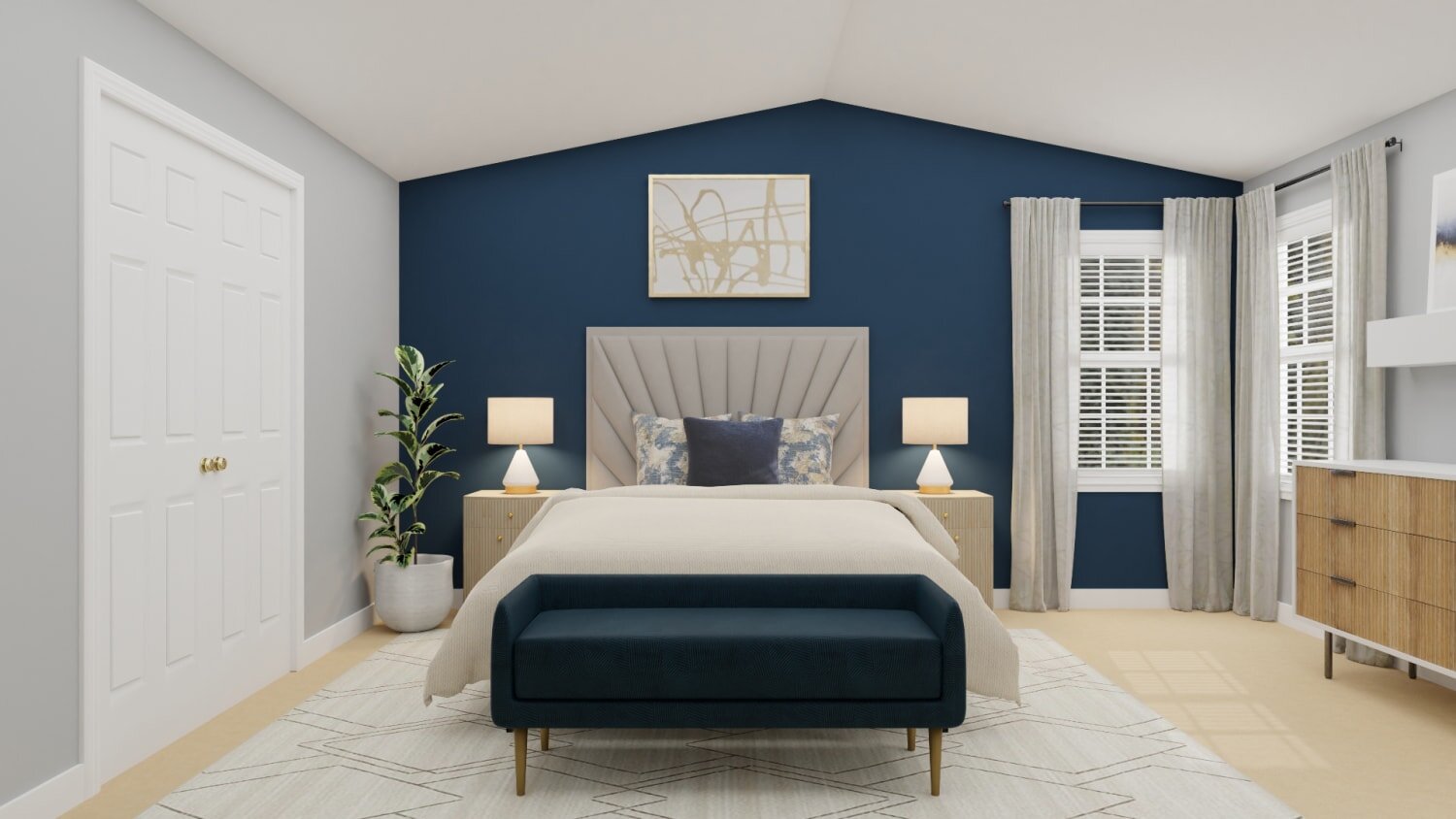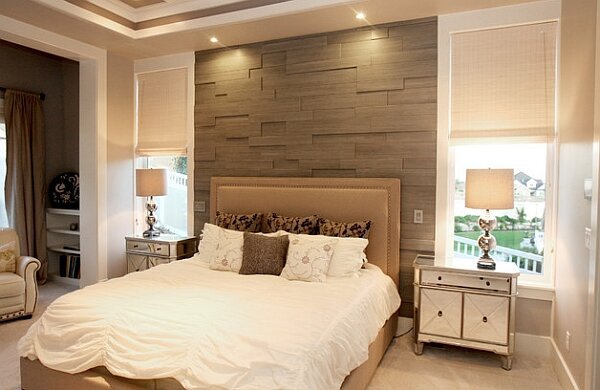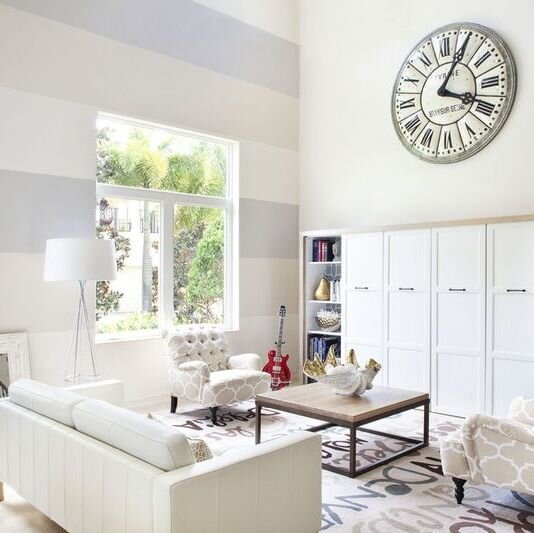Accent Walls
What is an Accent Wall?
An accent wall is an interior or exterior wall that can have a different color, shade, design or material from the other walls around it. The great thing about an accent wall is that they only have one job - to highlight a wall!
There are unlimited paint options when it comes to creating an accent wall, as well as, many materials and surfaces that can be used. Your home is unique, so your accent wall should be just as special.
Are Accent Walls Still “In”?
Yes, accent walls are still “in” and done right, they can even be elegant and timeless. Just plan accordingly and give the project some thought before getting started.
A Few Helpful Tips When Planning An Accent Wall -
To avoid overpowering the space, follow the 60-30-10 wall color rule - The majority of the room (60 percent) should be a neutral backdrop. Your secondary color (30 percent) can be applied to your accent wall. The other 10 percent is left for your accent pieces (accessories in the room).
Two options to go when choosing paint colors for accent wall. Muted colors or bolder ones.
- Muted Approach: Choosing a deeper or lighter version of the neutral color that’s already in the room tends to look good. Many people find decorating success when they choose the same color just in a different saturation. If you like the subtle approach, when choosing a color for your accent wall skip 1 to 2 colors on the color chart (either going lighter or darker) from your base room color.
- Bolder Approach: Choosing a high contrasting color from the neutral walls already in the room will provide that pop of color that you are looking for. A vibrant color will add dimension, depth and excitement to the room.
Account for the rooms purpose when choosing colors. If painting a bedroom for instance, choosing a vibrant red may make it difficult to fall asleep. Select colors based on how the room will be used.
Do be creative. You can do more than just paint your accent wall. Utilize wallpaper, wood, artwork etc. to create your accent wall.
Choose the right wall to highlight.
- Find the natural focal point in the room.
- Create a focal point if the room doesn’t have one.
- Select the farthest , shortest wall in an oblong room.
Don’t forget to take into account the texture, architectural features, and light exposure of your accent wall. You want to choose an accent wall design that will complement the physical attributions of space.
Always stop and start the accent color on an inside corner, rather than an outside corner.
Aiming to create an accent wall with multiple colors? Use painters tape to outline your design. Tape down your design, wait until the paint is fully dry, and pull off the tape to reveal your vision.
Don’t think you have a contender for an accent wall? Don’t forget about the “fifth wall”, otherwise known as the ceiling. If your room has no common focal point, look up and infuse the ceiling with color.
Accent walls are a great way to add a creative spin on an average interior paint project. The possibilities are endless! If you have an idea for an accent wall and need help executing your vision give Cobb Brothers a call 508-655-7910. We are happy to help!





